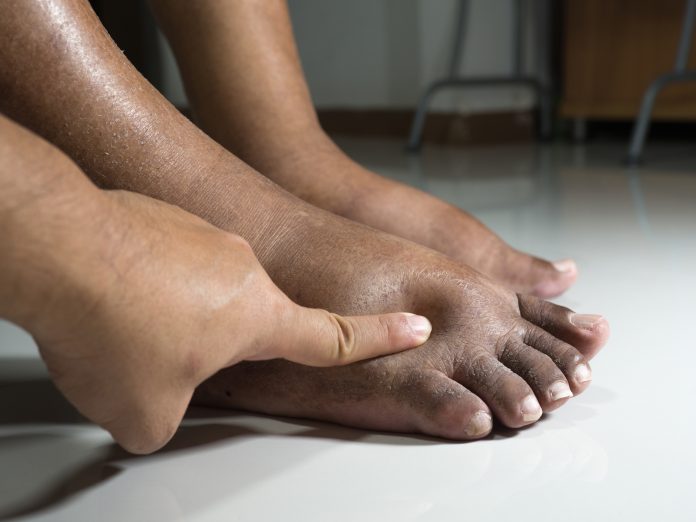A simple annual foot test can help detect atrial fibrillation in patients with diabetes, according to research presented at EHRA 2021
Patients with diabetes are advised to attend annual foot checks due to the risks associated with increased blood sugars such as poor circulation, nerve damage, numbness, and even foot amputation if problems go undetected.
The prevalence of atrial fibrillation is at least two-fold higher in patients with diabetes compared to those without.
In a new study, showcased at EHRA 2021, an online scientific congress of the European Society of Cardiology (ESC), two podiatrists and six podologists examined 300 patients with diabetes for rhythm abnormalities during pulse palpation of the foot arteries.
Those with rhythm abnormalities underwent a Doppler ultrasound to verify the observations.
Anticoagulation medication
The researchers found that 51 patients (17%) had previously undiagnosed atrial fibrillation. They were advised to visit a cardiologist for an electrocardiogram (ECG) to reinforce the diagnosis and discuss treatment.
Although people with atrial fibrillation have a five times greater risk of stroke, anticoagulation medication is an effective preventive therapy.
“In our study, one in six patients with diabetes had previously undiagnosed atrial fibrillation,” said study author Dr Ilias Kanellos of the European University of Cyprus, Nicosia. “This presents an opportunity to provide treatment to prevent subsequent strokes.
“The yearly check-up includes palpating the arteries in the feet to examine whether there is healthy blood flow. During this examination, we noticed that some patients had an irregular rhythm and decided to investigate its usefulness for diagnosing atrial fibrillation.
“The study has identified a simple, quick, and low-cost way to identify patients with diabetes who have a heart rhythm disorder they were unaware of. This intervention has the potential to avoid strokes and preserve the quality of life in this patient group.”
180 of the patients were men and 120 were women. They had an average age of 60 years.








